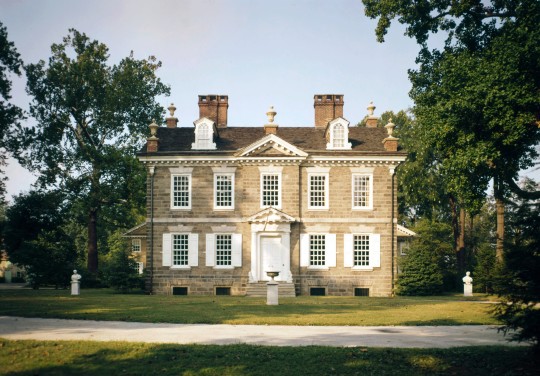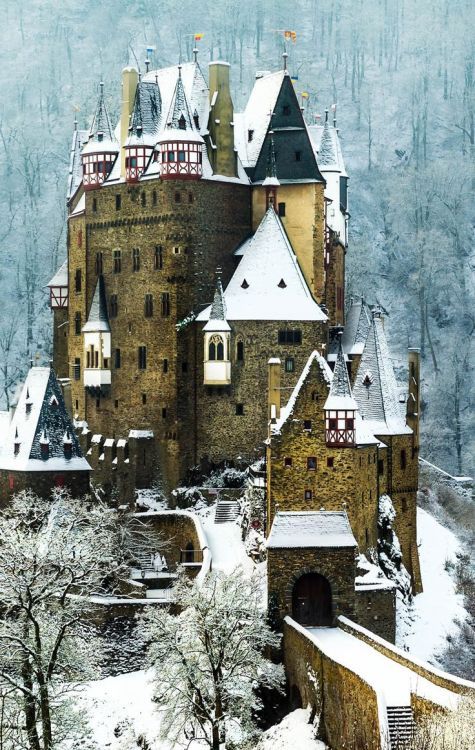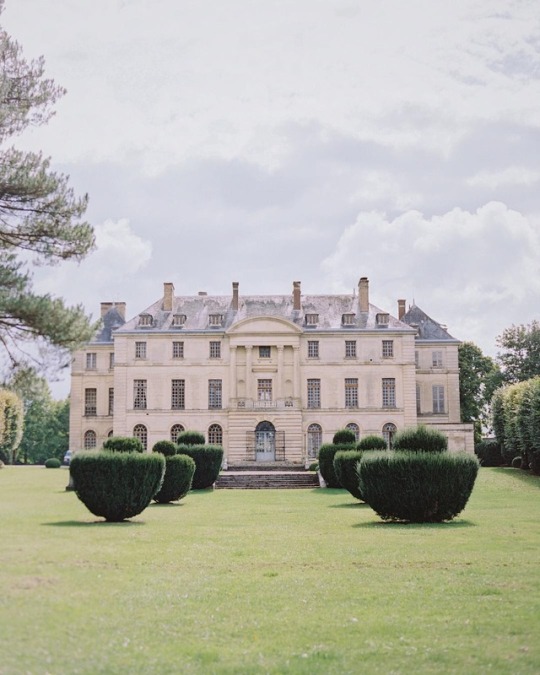Photo

Alcazar, Segovia, Spain.
www.castlesandmanorhouses.com
The Alcázar of Segovia (literally, Segovia Castle) is a stone fortification, rising out on a rocky crag above the confluence of the rivers Eresma and Clamores near the Guadarrama mountains. It is one of the most distinctive castle-palaces in Spain, shaped like the bow of a ship.
Like many fortifications in Spain, it started off as an Arab fort, which itself was built on a Roman fort but little of that structure remains. It has served as a royal palace, a state prison, a Royal Artillery College and a military academy since Moorish times.
84 notes
·
View notes
Photo

Cité de Carcassonne, Aude, Languedoc (Occitanie), France.
www.catharcountry.info
Cathar Castle Tours restarting! Week-long tour of Cathar Castles in June 2021. See www.catharcountry.info/Week.html for details
The Cité of Carcassonne is the largest city in Europe with its medieval city walls still intact. Although the outer curtain wall of the cité is French, and the whole site has been substantially restored, the Château Comtal has a strong claim to be called a “Cathar Castle” from the pre-French, Occitan, era. When the Catholic Crusader army arrived in 1209 they first attacked Raymond-Roger Trencavel’s castrum at Bèziers and then moved on to his main stronghold at Carcassonne. Inside the Cité is the castle of Raymond Roger Trencavel, Viscount of Carcassonne, Béziers, Albi and the Razès. He died in his own prison here in 1209, aged 24, after being taken prisoner while under a safe-conduct from the Cistercian Abbot Arnaud Amaury the papal legate and military leader of the Albigensian Crusade, who besieged Carcassonne (and who afterwards appointed Simon de Montfort as military leader of the crusade).The castle was restored in 1853 by the architect Eugène Viollet-le-Duc. It was added to the UNESCO list of World Heritage Sites in 1997.
113 notes
·
View notes
Photo

Château de Montségur,
Ariege, Occitanie, France.
http://www.catharcountry.info/Week.html
#OnThisDay
On the morning of 16 March 1244, some 225 Cathars were burned alive here, without trial, by the leaders of two Catholic Church armies and a French army.
A Garrison of around 200 sympathizers had defended the pacifist Cathar refugees here for ten months against combined besieging armies of 5,000 - 10,000, before the garrison was forced to surrender.
See www.catharcountry.info for 2021 Tours
65 notes
·
View notes
Photo

Cliveden - Germantown, Philadelphia
“Cliveden is an outstanding example of Philadelphia Georgian architecture. Probably designed by Chew and Jacob Knor, a master carpenter, the stone masonry house has particularly fine interior woodwork”.
— Historic American Buildings Survey
1K notes
·
View notes
Photo

Château d'Esnes
Esnes, Nord, France
Built around 1007, transformed and enlarged many times.
Transformed into a farm dring the French Revolution and serves as a farm even these days.
222 notes
·
View notes
Photo

Eltz Castle (Burg Eltz),
Above the Moselle River between Koblenz and Trier, Germany.
www.castlesandmanorhouses.com
The Eltz family lived there in the 12th century, 33 generations ago, and still does. About 100 members of the owners’ families lived in the over 100 rooms of the castle. It is a Ganerbenburg, or castle belonging to a community of joint heirs. It is divided into several parts, which belong to different branches of a family. In the case of Eltz, the family comprised three branches and the existing castle comprises three separate complexes of buildings The Rübenach and Rodendorf families’ homes in the castle are now open to the public, while the Kempenich branch of the family uses the other third of the castle. The main part of the castle consists of the family portions with up to eight stories and with eight towers reaching heights of between 30 and 40 meters.
This is as close as reality gets to Mervyn Peake’s Gormenghast
990 notes
·
View notes
Photo

Château de Vitré,
Vitré, Ille-et-Vilaine, France.
www.castlesandmanorhouses.com
The first castle in Vitré was built of wood on a feudal motte around the year 1000 on the Sainte-Croix hill. The first stone castle was built by the baron Robert I of Vitré at the end of the 11th century. The defensive site chosen, a rocky promontory, dominated the valley of the Vilaine. A Romanesque style doorway still survives from this building. During the first half of the 13th century, baron André III, rebuilt it in its present triangular form, following the contours of the rocks, surrounded with dry moats.
The castle was bought by the town in the 1820 for 8,500 francs. It was one of the first castles in France to be classified as a monument historique (historic monument).
702 notes
·
View notes
Photo

Carew, Wales, UK. So many good angles of this castle alongside the river.
Found here
1K notes
·
View notes
Photo

Castello DI Padernello (Padernello Castle),
Padernello, (near San Giacomo), Brescia, Italy.
www.castlesandmanorhouses.com
The castle was built at the end of the 14th century by the Martinengo family, who owned it until the death of the last heir. After changing owners a few times, the castle was abandoned in 1961 until in 2006 the Padernello Castle Foundation started a long series of renovation projects. It has a working drawbridge and moat.
211 notes
·
View notes
Photo

Schloss Drachenburg (Drachenburg Castle)
Königswinter, on the Rhine near Bonn, Germany.
www.castlesandmanorhouses.com
Schloss Drachenburg is a private villa in palace style constructed in the late 19th century. It was completed in only two years (1882–84) on the Drachenfels hill. Baron Stephan von Sarter, a broker and banker, planned to live there, but never did. Today the Palace is now in the possession of the State Foundation of North Rhine-Westphalia.
261 notes
·
View notes
Photo

Kitchen,
Royal Pavilion,
Brighton, England.
www.castlesandmanorhouses.com
The Royal Pavilion also known as the Brighton Pavilion is a former royal residence built in three stages, beginning in 1787, as a seaside retreat for George, Prince of Wales, who became the Prince Regent in 1811. It is built in the Indo-Saracenic style prevalent in India for most of the 19th century. The current appearance of the Pavilion, with its domes and minarets, is the work of architect John Nash, who extended the building starting in 1815
86 notes
·
View notes
Photo

Charlecote Park,
east of Stratford-upon-Avon, Warwickshire, England.
www.castlesandmanorhouses.com
Charlecote Park is a grand 16th century country house, surrounded by its own deer park, on the banks of the River Avon near Wellesbourne. The Lucy family owned the land from 1247. Charlecote Park was built in 1558 by Sir Thomas Lucy. Queen Elizabeth I stayed in the room that is now the drawing room. Successive generations of the Lucy family had modified Charlecote Park. In 1823, George Hammond Lucy inherited the house and set about recreating the house in its original style. It has been administered by the National Trust since 1946 and is open to the public. It is a Grade I listed building.
424 notes
·
View notes
Photo

THE PALACE
Strawberry Hill House, Twickenham, of The Earl of Orford, of The Earls of Dorchester and The Waldegrave Family
245 notes
·
View notes
Photo

Villa Doria Pamphili, Rome, Italy (by Giorgio Rodano)
3K notes
·
View notes


